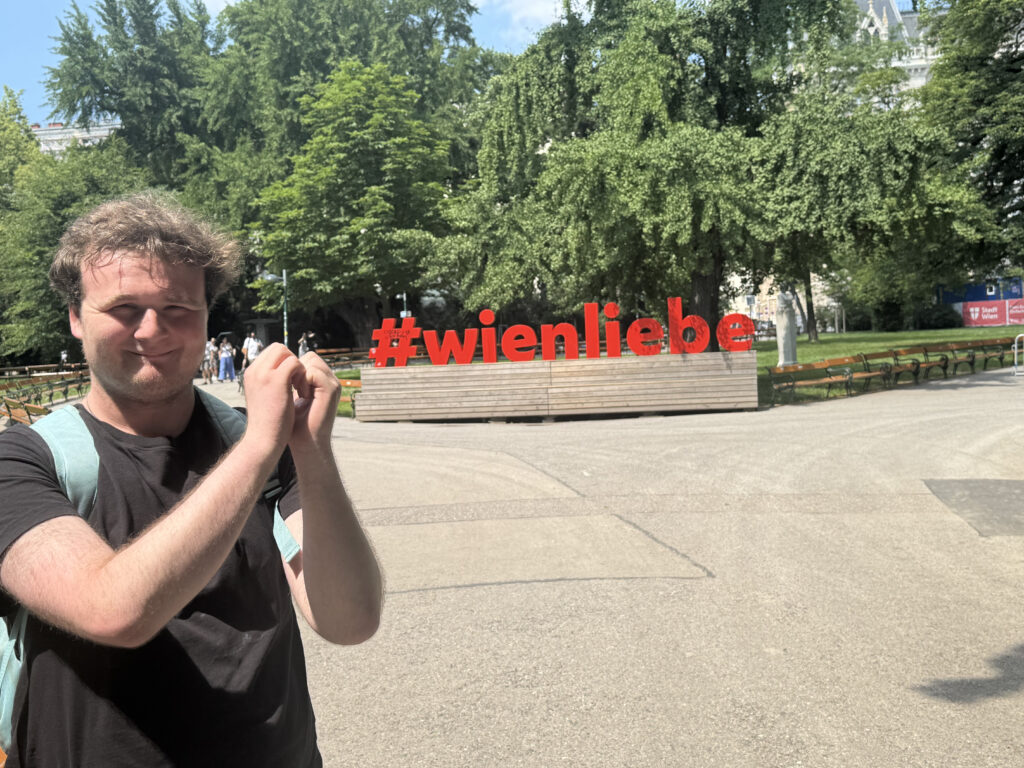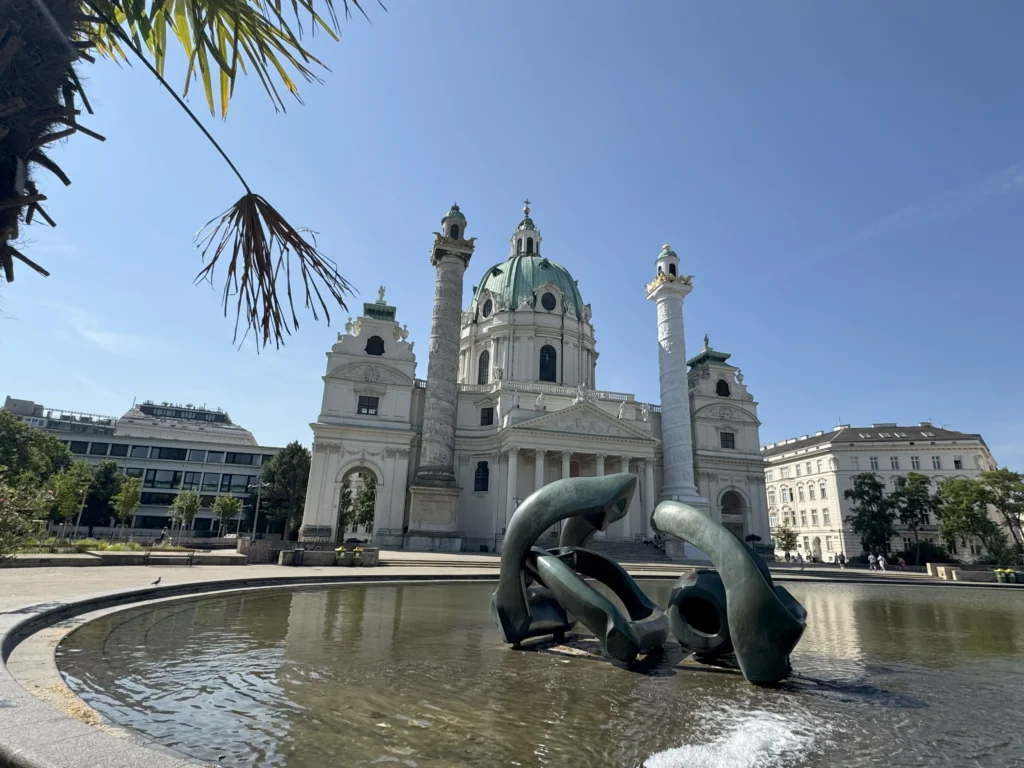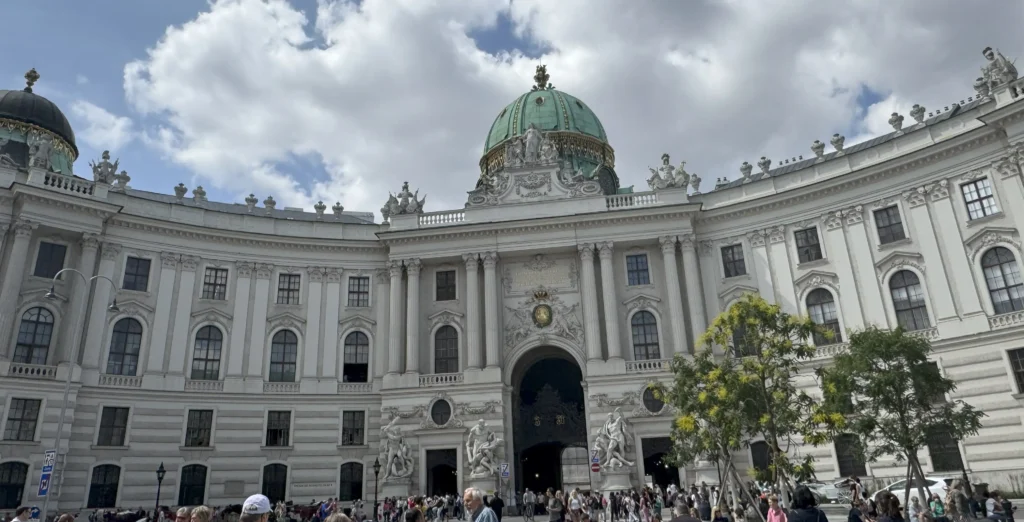By Jacob Rosser (and Jennifer Hartley)

Listen to this Article
“In Austria, history unfolds like a storybook, with each chapter revealing a new layer of grandeur and enchantment.” The 18th century Habsburg monarch, Empress Maria Theresa, said that about her beloved country and my mother and I couldn’t agree more. Austria has a vast and rich cultural past and its influence on Europe over the centuries is expansive. The Habsburg Empire lasted for over 600 years. European history flows through the Danube and Vienna is the centre –and it is one magical place. It was the perfect way to start an Austrian adventure. I divided my trip into three locations: Vienna, Salzburg and Innsbuck. Each place is charming for its own distinguishing features.
Here is a taste of magical Vienna.
Vienna ranked second in the 2024 Mercer consulting group’s annual Quality of Living survey of world cities for very good reason. Like many other European cities, stunning architectural beauty envelops the city, but there is an additional feeling of being immersed and cradled in culture in a way that differs from other Euro cities. Vienna may be a city of two million people, but it feels smaller and more intimate, making it great for creating a safe environment for visitors who may have challenges and there is a relaxed and welcoming vibe to the city. People waltz in parks, congregate in the evening and enjoy each other. In the warm summer evenings, platzes (piazzas) are alive and brimming with people of all ages just soaking up life together.
The city also has all the services needed to make it accessible.
Vienna has long inspired artists, philosophers and dreamers. You can practically hear the echo of Mozart’s horsedrawn carriage in the streets of the city he so loved and yet, paradoxically, this is a cosmopolitan 21st century city where you can dance the night away to 80s music (Falco was from Vienna after all — my mom was really excited to visit Falco’s bar, dedicated to the musician) or catch up on social media as you sip on a Viennese cup of java in an 18th century café. (But really, you should skip surfing and just soak up where you are.)

Magnificent Museums
Museums and galleries are peppered across the city, which is easy to walk around. (If walking is an issue, low-floor vehicles are used on all bus and almost all streetcar routes in Vienna. This makes it easier for people with limited mobility to get around.)
Here are my favourite museums:
- The Belvedere has an incredible collection of Gustav Klimt’s art. Arguably his most famous piece, The Kiss, is here. It is also where the Austrian State Treaty was signed in 1955 — when Austrian Independence was restored after the war. The room is spectacular.
- The Albertina: over 600 years of art history.
- Kunst historisches Museum: One of the world’s leading museums has objects from five millennia, from Ancient Egypt to the late eighteenth century and the building itself is a work of art.
- The Sigmund Freud Museum: Visiting the home of the father of psychotherapy — 9 Berggasse—was deeply moving. Standing inthe room where he performed his research and made discoveries into the human mind was riveting. The actual day bed is in London but this is the room where the work was done. Being a neo-divergent person, I felt an enormous sense of gratitude and it was honour to be able to see the treatment room where he worked with patients. However, his actual study was a surprising place of calm and peace. There are many of his artifacts that remain in the home.
- Museum of Military History: This museum was a magical place for me. There is an exhibit on the Archduke Franz Ferdinand’s murder in 1918. The uniform he was wearing is on display as is the car in which he and his wife were killed. That event changed world history in the 20thcentury so it is poignant.
- Hofburg Palace: This is where one can get a sense of the magnitude of the 600-year Habsburg Empire. Their investment in culture and architecture made Austria the spectacular place it is.
- The Jewish History Museum of Vienna. It is one of the hidden gems. It explains with incredible detail the Jewish history — from the ups and downs, the tragedies and innovations of the Jewish people here.
- The MuseumsQuartier takes up blocks with different, with modern galleries for those looking to explore that kind of art.
- Near the MuseumsQuartier is the Austrian Parliament. If you love politics it is a fun experience. The building is a mix of mid 19thcentury beauty and modern amenities. It is also massive with over 100 rooms. I spent over two hours exploring and sitting in on a session.
Not to be forgotten are churches, which are bastions of stunning architecture and art. There are hundreds of them in Vienna. Here are three of my favourites.
- St Stephansplatz, beautiful Gothic cathedral, Mozart was married there.
- Many churches offer concerts. 18th-century Karlskirche honours Vivaldi (buried nearby).
- Annakirche also offers a plethora of concerts and is stunning inside. It looks pretty basic outside but inside is breathtaking. It symbolized a lot for me. Never judge a book, building or person by its cover. Inside is beauty.

Culinary Quests
Vienna takes coffee seriously and UNESCO added Viennese coffee houses to their Intangible Cultural Heritage list. Take note that wherever you go, a little glass of water accompanies your coffee. Apparently, this is historical to show the quality of the water of the café but is also a place to put your spoon, which I found amusing.
I made it a point to visit as many cafés as I could. A few of the best:
- Café Frauenhuber: Vienna’s oldest. Previously a restaurant where Beethoven and Mozart enchanted guests with their music — but even then it was known for its coffee.
- The Café-Restaurant in the Kunst historisches Museum: one of the most stunning in the city, if not the world.
- Café Central: It was a favourite of many famous thinkers such as Sigmund Freud and Alfred Adler, famous political figures such as Trotsky, Tito and the deplorable Hitler and Stalin hung out here, too. Music lovers will appreciate that the composer Mahler was a frequent guest here.
- Café Landtmann was one of Freud’s all-time favourite cafés so it was one of mine.
- Café Sperl is worth a stop, especially for fans of the movie Before Sunrise(which my mom really liked.)
- Café Schwarzenberg: their apfelstrudel is fantastic.
Sustenance
Sausages were added to UNESCO’s intangible cultural heritage list in 2024. Bitzinger’s offerings are delicious. Skip the bun, add mustard for an authentic Viennese experience. There are sausage huts everywhere though and many are open late.
Pretzels, Wiener Schnitzel, potato salads of every variation are fabulous. Just explore and taste.
- The bistro Tante Liesl has delectable meals and is in a lovely quiet neighbourhood (near the Freud museum). Try their incredible potato salads.
- Eat croissants everywhere in patisseries and cafés. The Austrians created them, not the French.
- Want to splurge? Steirereck, a Michelin-starred restaurant in the Stadtpark.
Let There be Music
A trip to Vienna is not complete without a live concert. I was forced to take violin lessons as a child but had to drop them because the teachers had a hard time dealing with me but that is another story. However, I learned about some of the great composers. I discovered a renewed love of classical music after visiting Austria. Vienna is truly the classical music capital of the world and was home to famous composers like Haydn, Mozart, Beethoven, Schubert and Strauss (he perfected the waltz.) While we went to the distinguished Karlskirche to hear Vivaldi’s music, many other churches have live concerts. Of course, the Vienna State Opera House is world famous for its talented musicians and singers.
Nature
Around 50 percent of Vienna’s land area is made up of green spaces or bodies of water. I loved walking around the parks, taking in nature. Stadtpark, Volksgarten and Burggarten are peaceful and the gardens are picturesque. Be sure to keep your eyes out for monuments and statues. (Mozart in Burggarten was astounding as was Strauss in Stadtpark.)
While admiring them for their beauty has merit, knowing the history makes them more interesting. I think of the Plague Column– the Pestsäule – near the St Stephansplatz — dedicated to the Trinity, thanking God for saving Austria from the plague. (Take a look at the king’s protruding chin, a sign of the inbreeding in that family. You can see it in other works of art (busts and paintings in the Kunst historisches.)
Sleep
It is sadly obligatory.
There are some amazing places to lay your head down. The Hotel Sacher is five-star luxury all the way for those who are so inclined and if you like Sachertorte, then do not miss a stop here.
I personally quite enjoyed the Hotel Magdas because it is a quirky social business that hires and trains people who have fled their countries. I really like that side of it. It is a new hotel (opened 2023), is clean and has a relaxed vibe. Europeans make the best buffet breakfasts and Hotel Magdas is no exception.
Last but not least, there is a great app called ivie Vienna — a fabulous digital guide to Vienna. We used it a lot and offers history background and fun facts about the city.
Vienna is truly one of the most spectacular cities in the world. Its inviting and accepting ethos means it is accommodating to people of all diversabilities. I was amazed at how patient people were and genuinely interested in me and my superpowers. Everyone speaks English so that helped and it is a very safe place for everyone. It is my favourite European capital and I can’t wait to go back and explore more.
